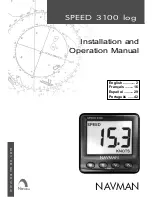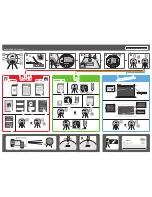
GE H
EALTHCARE
D
IRECTION
5461425-8EN, R
EVISION
B
RIVO
XR118 S
ERVICE
M
ANUAL
Page 208
Section 2.0 - Software Issues
4.) Save Changes
The command to save the contents of the editor is <:w>. You can combine the above
command with the quit command, or <:wq>. You can specify a different file name to save to
by specifying the name after the: w. For example, if you wanted to save the file you were
working as another filename called filename2, you would type: w filename2 and <enter>.
5.) Exit VI
The VI editor has two modes and in order to get out of VI, you have to be in command mode.
Hit the key labeled <Esc>. The OS might beep, but you will still be in the command mode.
The command to quit out of VI is <:q>. Once in command mode, type colon, and <q>, followed
by <ENTER>. If your file has been modified in any way, the editor will warn you of this, and not
let you quit. To ignore this message, the command to quit out of VI without saving is <:q!>. This
lets you exit VI without saving any of the changes.
2.4.3
Using VI Editor
The first thing you need to know is that VI editor has two modes of operation: command and insert
mode.
VI starts out by default in command mode. Command mode only allows the entry of VI commands.
You insert text into your file while you’re in the insert mode. Insert mode puts anything typed on the
keyboard into the current text file. There are several commands that put the VI editor into insert
mode. The most commonly used commands to get into insert mode are <a> and <i>.
Once you are in insert mode, you get out of it by hitting the <esc> key to return to the command
mode.
1.) Text Buffering
You don’t have to specify buffers to use VI. The VI editor has 36 buffers for storing pieces of
text, and also a general purpose buffer. Any time a block of text is deleted or yanked from the
file, it gets placed into the general purpose buffer. Multiple buffers allows you to save cut or
copied text for later re-use.
You can specify a unique buffer by using the <"> command. After typing <">, a letter or digit
specifying the buffer must be entered. For example, the command: <"mdd> uses the buffer m,
and the last two characters stand for delete current line. Similarly, text can be pasted in with
the<p> or <P> command. <"mp> pastes the contents of buffer m after the current cursor
position. For any of the commands used in the next two sections, these buffers can be
specified for temporary storage of words or paragraphs.
2.) Cutting Text
The command commonly used command for cutting is d. This command deletes text from the
file. The command is preceded by an optional count and followed by a movement specification.
If you double the command by typing <dd>, it deletes the current line. Here are some
combinations of these:
<d^> deletes from current cursor position to the beginning of the line.
<d$> deletes from current cursor position to the end of the line.
Содержание Healthcare Brivo XR118
Страница 4: ...GE HEALTHCARE DIRECTION 5461425 8EN REVISION 6 BRIVO XR118 SERVICE MANUAL Page 4 Legal Notes ...
Страница 46: ...GE HEALTHCARE DIRECTION 5461425 8EN REVISION 6 BRIVO XR118 SERVICE MANUAL Page 46 ...
Страница 134: ...GE HEALTHCARE DIRECTION 5461425 8EN REVISION 6 BRIVO XR118 SERVICE MANUAL Page 134 Section 14 0 Installation Checklist ...
Страница 164: ...GE HEALTHCARE DIRECTION 5461425 8EN REVISION 6 BRIVO XR118 SERVICE MANUAL Page 164 Chapter 7 Brivo XR118 System Check ...
















































